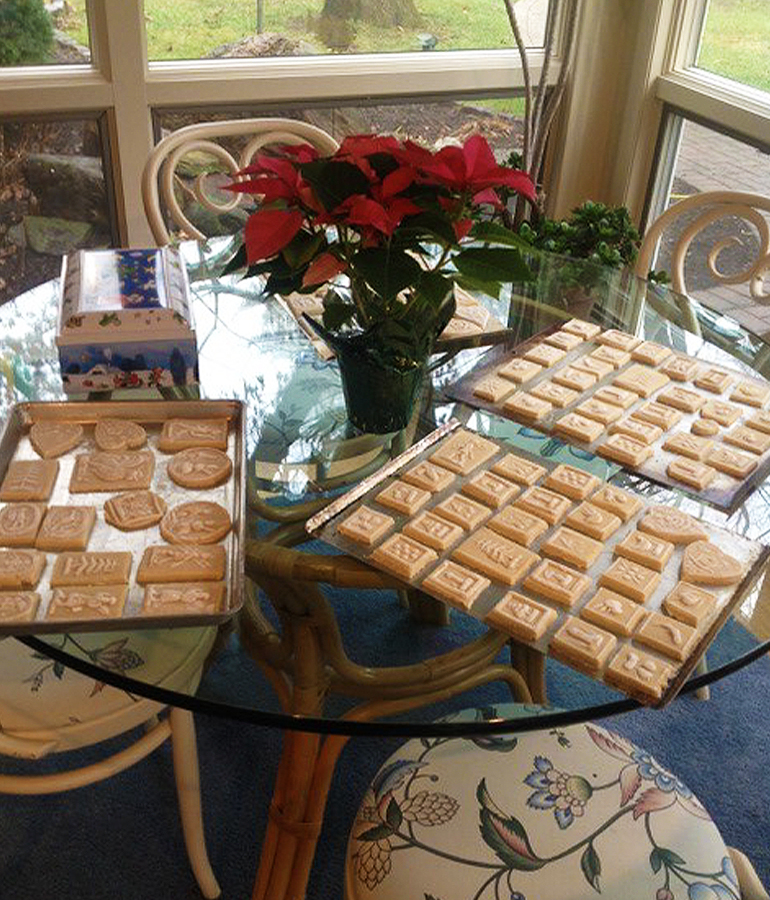Staying Fit


You can tell a lot about a person by their holiday traditions, not all of it flattering. Take the family of my husband, Paul, for example, who are obsessed each season with getting an enormous, live Christmas tree and ensuring that it is aligned at a perfect 90-degree angle. Slightly askew is not permissible. To achieve this result, they rig the tree with cables anchored to the wall and bark directions at one another. There may be protractors involved.
You would be correct in assuming this is a family of perfectionists. The scientific rigor came from Paul’s father, a Jesuit-educated astrophysicist who despaired that his five children didn’t follow him into astronomy. (When Paul was accepted to law school, his father sighed with deep disappointment: “But Paul, you’re bright enough to do science.”)
So, perhaps to compensate for not having little Galileos as offspring, the need for precision and scientific method spilled into other arenas — Christmas tree posture, and the proper sequencing of ornaments. Large ornaments on the bottom, small ornaments on top, gradations of size in between. Woe to anyone who hangs a plus-size ornament mid-tree, as I once did when we were first married. It will be rehung. Obey the method.
—Tracy Shorn
Paul doesn’t find any of this at all odd. I suppose no one finds their traditions strange until they intersect with another person’s and certain assumptions are laid bare. “Well, that’s just always the way we’ve done it.” It’s not like my family is perfect. (If we were, those trees would stand a lot straighter.) We have our own holiday weirdness.
“You spend two whole days making dry, butterless cookies that taste like putrid black jelly beans,” Paul alleges.
“That’s anise seed,” I correct.
“Why do you insist on making those awful things?”
Tradition. And they aren’t awful, they’re springerles (pronounced spring-er-lees) — a molded German cookie that dates to the Middle Ages. It’s not Christmas without springerles.
“I’m sorry you lack the sophistication to appreciate fine homemade baked goods,” I sniff. “Perhaps you would prefer something squeezed from a tube and adorned with artificial sprinkles.”
An acquired taste
Not everyone is a fan of springerles. It’s true, they don’t have butter, and they’re exceptionally difficult to make. But that just means you must work harder to appreciate their charms. Assuming you can stick it out. Springerles take one day to make and another 24 hours to dry before baking, and then (for the hardcore fans) another month after that to store them, so the anise flavor deepens. And isn’t that what the holiday season is all about? Delayed gratification!
The inherent suffering makes the springerle cookie completely on brand for my family — stern, Nordic, Midwestern people who have a complicated relationship with pleasure. No goopy icing or chocolate glazing for us. That’s too easy. We need difficult cookies.
In my experience, all the German Christmas cookies are varying degrees of impossible. Lebkuchen (ginger cookies) require boiling honey and using communion wafers as a base. Zimtsterne (cinnamon stars) have a gooey dough that must be rolled out with ground almonds, not flour. Pfeffernüsse (spice cookies) are made from leftover artillery shells from the second World War. OK, not really. Actually, I don’t know what Pfeffernüsse are made of. The ones my mother enjoys are a sort of white-glazed puck you could concuss someone with.
Hardness is a Christmas cookie metric in my family. It’s not a failing; it’s a desired outcome. Last year, I sent my mother springerles, and she complained they were too soft. So, she stuck them in the oven on a low temperature to toughen them up. She cannot abide a weak cookie.
My maternal grandfather used to wait months until his springerles were rock hard (and extra anisey) so he could dunk them in his coffee and gnaw on them. They do not yield easily. I believe other cultures call this “hard tack.”



































































You Might Also Like
Conquering a Fear in Fiji
A traveler seeks to repair his relationship with water and rekindle the joy of aquatic activities
A Story of Hiking and Healing in the Grand Canyon
Traversing a gorge salvages a friendship that had hit the rocks
More Members Only Access
Watch documentaries and tutorials, take quizzes, read interviews and much more exclusively for members